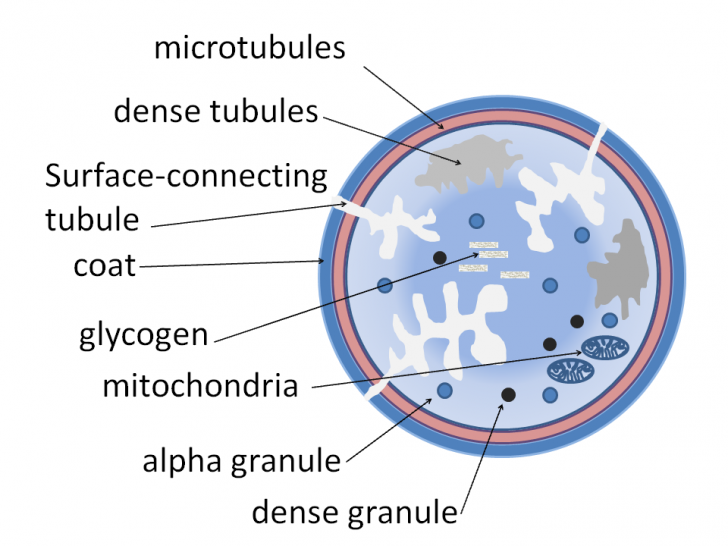Blood is the fluid in living organism that transports oxygen and nutrients to the cells in the body. It consists of Red Blood Cells(Erythrocytes), White Blood Cells(Leukocytes) and platelets (Thrombocytes).
Platelets are the part of the blood that helps to prevent blood loss through wounds by forming clot and fight off infections.
1µl (microlitre) of blood contains
- Thrombocytes: 150,000 – 500,000
- Erythrocytes:
- Male – 4.7 to 6.1 million
- Female – 4.2 to 5.4 million
- Leukocytes: 4,000–11,000
Note: Increases the number of thrombocytes causes thrombocytosis. Decreases the number of thrombocytes causes thrombocytopenia.
Characteristics of Platelets (Thrombocytes)
Shape: It is irregular shaped cells.
Size: It measures about 2-3 micrometre in diameter.
Structure: Thrombocyte cells are flat and non-nucleated cells. Each cell is bounded by membrane and contains few cell organelles. It has a group of basophilic granules is in the centre.
Formation: Formation of thrombocytes is called thrompoiesis. It is formed by the fragmentation of cells called Mega Karyocytes from bane marrow. It is destroyed by the spleen and liver.
Life span: Normal life span of thrombocytes is about 7-9 days.
Function: Blood platelets are source of thromboplastin which is necessary for blood clotting. Blood clotting protects the arganism by stopping bleeding or hemorrhage. Clotting time is the required for blood to coagulate. It usually varies from 2-8 minutes. Blood clotting involves sequence of four satges resulting in the formation of thromboplastin, thrombin, fibrin and clot. The vitamin-K (Phylloquinone) is required for synthesis of prothrombin necessary for blood clotting.
- Damaged platelets or tissue cells release thromboplastin.
- Prothrombin + Ca++ $ xrightarrow[]{Thromboplastin} $ Thrombin (in plasma)
- Fibrinogen + Ca++ $xrightarrow[]{Thrombin}$ Fibrin
- Fibrin + cells $xrightarrow[]{Fibrin}$ Clot
